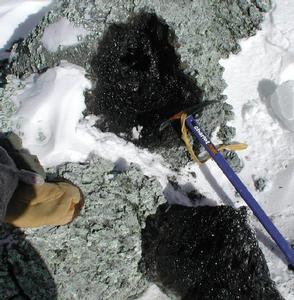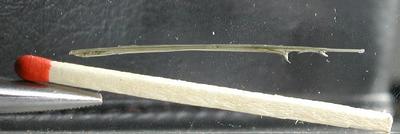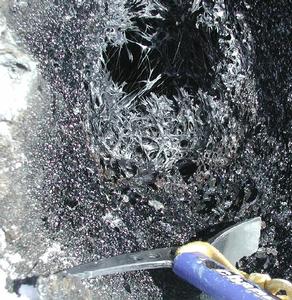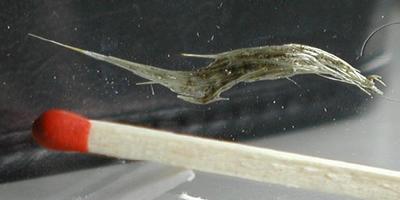13 December, 2001
More tough weather. Just acceptable enough for people to scatter to a few
outdoor data collection sites for a brief period. Two of our party went
to the rim and came back pretty cold. There was a little measuring of the
carbon dioxide content in some of the fumeroles near camp as well. I went
to an ice cave and tried to gather some ice crystals.
I had an interesting e-mail from a classroom in Quito, Ecuador.
Apparently we need to take a closer look at the material that is coming
out of the volcano during eruuptions that are larger than the ones we are
seeing now.
First of all, when climbing the mountain, we encounter "bombs." These are
large chunks of lava that have been thrown clear of the crater. At first
glance they look like a boulder--a big, heavy, solid chunk of rock. In
fact, they are brittle and quite often hollow. The expanding gases inside
of them puff them out as they are ejected. They can be torn apart with an
ice axe. They remind me of a puffed, roasted marshmallow. We'll take a
look inside in just a moment.
Before these bombs are ejected, something is going on in the magma chamber
deep below the earth. Crystals are forming within the molten material,
and when the bombs are ejected the crystals are imbedded in them. The
bombs weather away before the crystals, and so we walk on crystals laying
on the ground. These are not clear crystals (always) but sometimes when
they are polished light can pass through them. They are made of feldspar
with bits of black glass.
Glass is a strange material. It forms when certain kinds of molten rock
are cooled very quickly. It has a stretchy, plastic nature when hot, and
cools into all sorts of fantastic forms. In small eruptions, shreds of
glass can be blown out of the volcano and drift to earth as thread-like
structures. This is called Pele's Hair. Under the microscope, the glassy
nature is obvious. Ash laying on the ground is also deceptively glassy.
It looks like black grit, but under the microscope we see bits of glass.
Currently, the attention of this research group is not specifically
focused on the minerology of the rock produced by the volcano, but it has
been the center of interest in the past.

This is a bomb that I popped open with my ice axe. Some are larger, and some are smaller. They are not all this hollow and crumbly, but many are.

This is an example of Pele's Hair. I tried to show its glassy structure with my camera. A microscope would be better.

This is the inside of a volcanic bomb from Mt. Erebus. Note the glassy, "webby" structure of the inside. It is very fragile.

Another example of Pele's Hair--sometimes the strands are not quite so linear.

These are some of the crystals collected form the mountain. Their shape can vary.
Contact the TEA in the field at
.
If you cannot connect through your browser, copy the
TEA's e-mail address in the "To:" line of
your favorite e-mail package.
|
